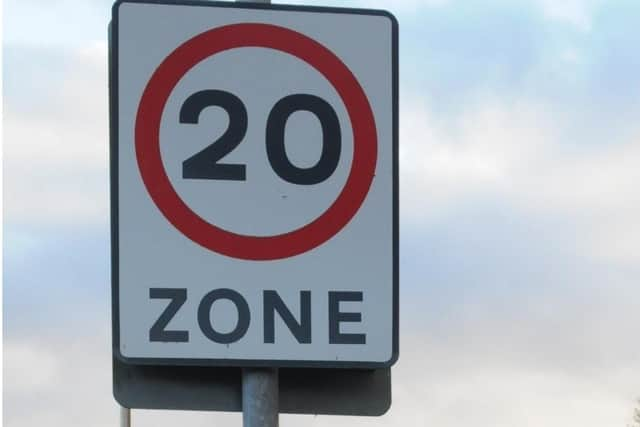North Yorkshire Council is wrong to reject 20mph zones in areas with pedestrians - Andy Brown
So most sensible people recognise that it is necessary to control the speed at which cars are travelling in areas where pedestrians and cyclists mix with motorists. Consequently every council in the country except for two uses fixed traffic cameras and many have also opted for average speed control zones.
One of the only two to resist this protective measure is North Yorkshire. In that giant county the police rely on a force of only six mobile units to monitor the speed at which people are driving. Once those officers have gone home for the night there is no legal enforcement of speed limits.
Advertisement
Hide AdAdvertisement
Hide AdThere are villages throughout North Yorkshire which have busy traffic routes alongside residential streets. On some of these roads people have recently left a motorway and too many drivers have got used to high speeds and don’t slow down sufficiently once they move to more rural roads.


Villages like Cowling, Gargrave or Hellifield have to put up with the sound and fumes of large vehicles pounding through their streets for 24 hours a day and 365 days of the year. Nowhere in North Yorkshire is provided with the simple protection of a fixed speed camera monitoring speeds and reminding drivers that they need to slow down.
Reducing speeds protects nearby residents from more than just the risk of being hit by a vehicle. In the UK air pollution causes 64,000 early deaths each year. It has been calculated that cutting speeds from 30 mph to 20 mph lowers the output of carbon dioxide by 26 per cent whilst also reducing the amount of nitrous oxide pumped into the local air by 28 per cent.
It is possible to achieve some impact on driver behaviour by deploying a handful of mobile units somewhere across 8,654 square kilometres. Yet it is nowhere near enough to protect villages with a continual problem in a giant county that stretches from Scarborough to Ingleton and from Selby to the edge of Darlington. People who are exposed to constant risk need constant protection.
Advertisement
Hide AdAdvertisement
Hide AdThe good news is that this clear case for change is finally being looked at and there is a possibility that a review commissioned by Zoe Metcalfe, the North Yorkshire Police and Crime Commissioner, will result in a change of approach and the introduction of fixed cameras. I will want to be the first to congratulate this Conservative politician if she proves brave enough to fall in line with the rest of the country and make the change.
The even better news is that North Yorkshire Council has responded to a request from 150 of its Parishes for 20 mph zones by reviewing its policy on implementing them in the villages and suburban areas where the representatives of the local community want them. Or it should have been better news.
Instead of listening to the people who understand their own communities the one party Executive which has taken political control over North Yorkshire, despite gaining only 40 per cent of the votes in the last elections, is making big promises of change but has plans for only very limited action in a few areas.
Under the guidance of the Conservative candidate to become Mayor of York and North Yorkshire, Keane Duncan, it has adopted a policy that contains no targets, no timescales and little clarity about funding. It seems to primarily consist of conducting a few trials of a 20 mile per hour policy in areas where there is evidence that people have already been killed or injured in the community that is requesting better protection.
Advertisement
Hide AdAdvertisement
Hide AdMoving slowly and waiting for statistics of bloodshed before taking action is a strange approach. It would be better to act on local knowledge than to wait for the cold hard reality of injuries or deaths. Politicians should surely be listening to every local Parish Council that wants to protect the lives of the residents they serve and giving them the key role in determining what solution will work best in the local environment.
In Lancashire and in West Yorkshire the approach is to respond more proactively to requests from community representatives rather than to wait for the damage to be done.
North Yorkshire Council has only recently become the sole authority in charge of all local affairs across the biggest local authority area in England. When it did so it boldly promised that it would be highly responsive to local needs and would be devolving much decision making to the local Parishes.
At the first test of whether those words have any meaning it has failed. Instead of listening to the 150 Parish Councils who have requested 20 mph zones and working with them to give their villages quieter streets and a safer community it seems to have chosen to pay little respect to their wishes and drag its feet on change.
Andy Brown is the North Yorkshire Councillor for Aire Valley.